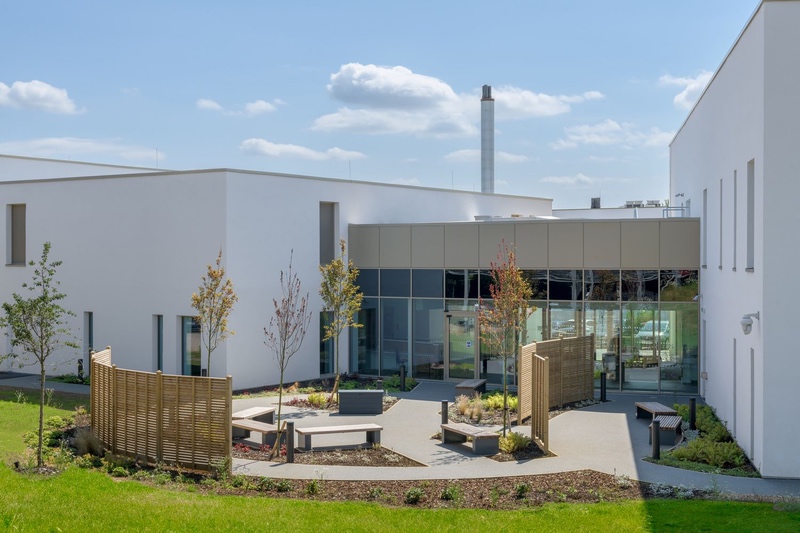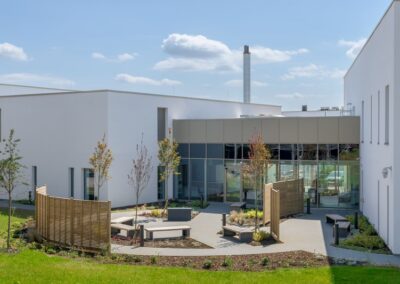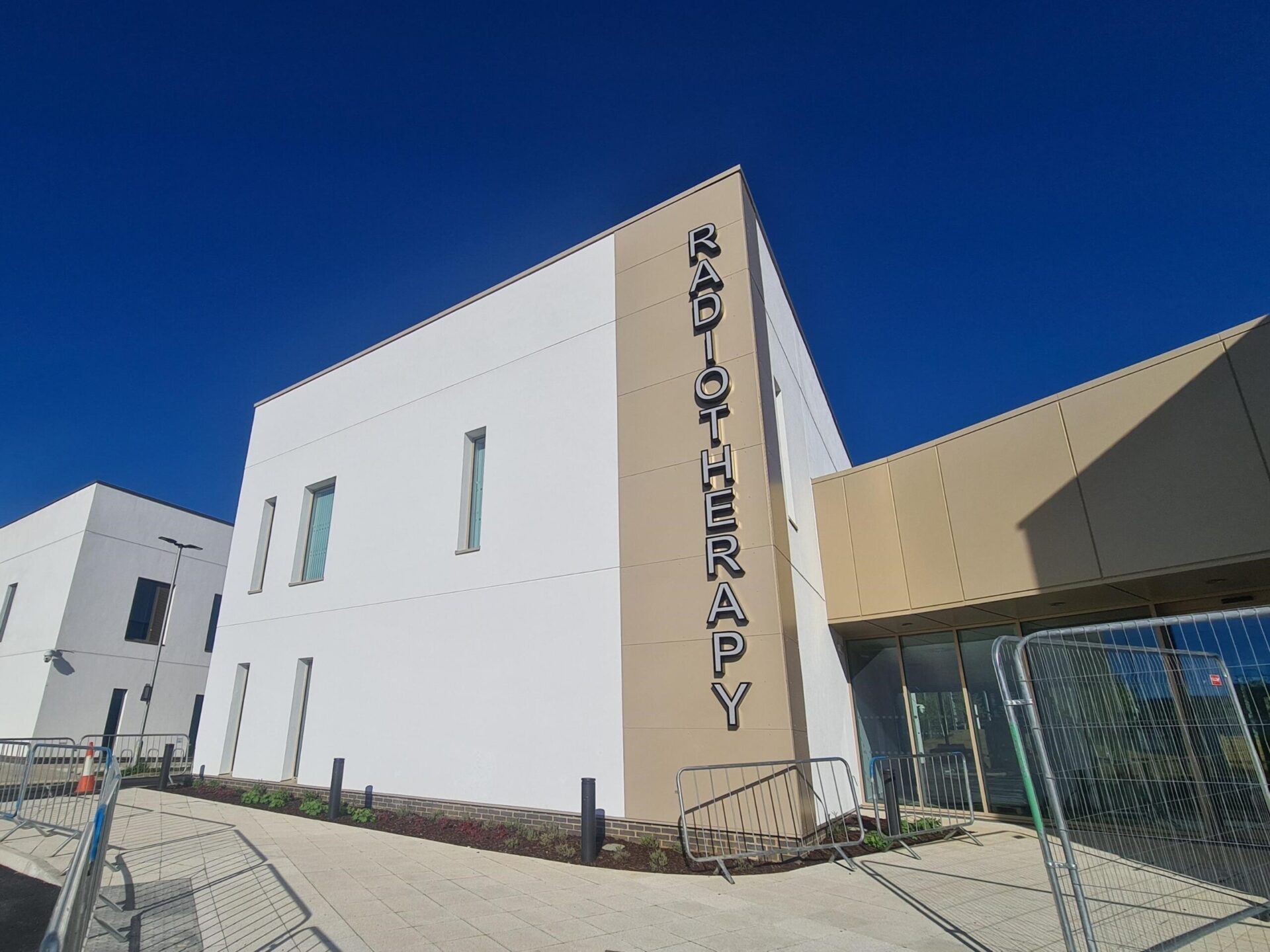INCA Case Study: Radiotherapy Centre, Milton Keynes
Radiotherapy Centre, Milton Keynes
Project Type: New Build
Building Type: Low Rise, Non-Residential
Architect: Ryder Architects
System Designer: Permarock Products Ltd
Installer: Rendserve Limited
System & Finish: PermaRock DD MF + silicone topcoat
U-Value Before: N/A
U-Value After: 0.11 W/m²K
Radiotherapy Centre, Milton Keynes Hospital
The New Radiotherapy Centre will be a welcome addition to the current cancer service offering, providing access to further care and treatment closer to home for many Milton Keynes residents and patients further afield. The new facility includes a state-of-the-art medical linear accelerator (LINAC) bunker, a radiotherapy planning CT scanner area and purpose-built consultation rooms.
The new building is replacing the outdated single-storey MRI scanner building, providing Milton Keynes with a cutting-edge medical facility. This ensures the community has access to modern diagnostic technologies and a facility that reflects the needs of the growing population.
The construction of the new 2-storey Imaging facility promises significant benefits for the local community. By improving diagnostic capabilities, patient experience, and operational efficiency, this project will positively transform healthcare access and outcomes in the region.
The £19.6m, two-storey radiotherapy centre which was procured through the PAGABO framework includes two medical LINAC bunkers (linear accelerator), as well as a main reception, consultation rooms, and a CT scanner area, all connected to the hospital’s recently opened Cancer Centre via a link corridor.
Building for radiation
The specialised nature of the project presented several unique construction challenges.
For example, the build required a “LINAC bunker”. This is a heavily shielded room where a medical linear accelerator (LINAC) is housed. These LINACs are used to deliver high-energy radiation therapy to cancer patients.
The bunker walls, floor, and ceiling are constructed with thick concrete to contain the radiation and prevent it from escaping into surrounding areas during treatment.
Utilising its Intelligent Solutions approach, Morgan Sindall created an incredible 2.6m thick concrete walls and a 1.4m thick roof to prevent radiation leakage from the radiotherapy equipment.
Due to the size of the walls and complexity of applying so much concrete, a schedule of long pours was designed to achieve the necessary thickness without compromising the quality of the concrete structure. 90 tonnes of steel have been used in the roof slab alone.
To guarantee a smooth building process, Morgan Sindall and their subcontractors accounted for several logistical factors during the development of the adjacent live hospital. This included extensive material delivery preparations to avoid undue inconvenience to the hospital’s patients and staff.
Materials were brought through the rear of the building, bypassing the front of the hospital where the new unit is located, as this is an important access point for the adjoining cancer centre, its drop off-point, car park, and nearby energy facilities.
Rendserve Ltd were appointed to supply and install the Permarock Insulated Render System utilizing 250mm DD Mineral Fibre finished with a bright white and fresh 1.5mm Silicone Ultra top coat to 1450m² of the external elevations providing an impressive U Value of 0.11W/m²K.
Rendserve also designed, supplied and installed the diamond mesh aluminium cladding to the plantroom areas and provided all the parapet capping’s and cills and with 2.7m wide finished walls, this was no mean feat.
The project was finished within program and under budget and the feedback from the client was excellent with plans already in place for same site teams to carry out the next buildings.
The project was finished within program and under budget and the feedback from the client was excellent with plans already in place for same site teams to carry out the next buildings.






